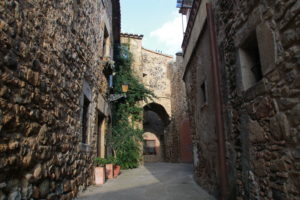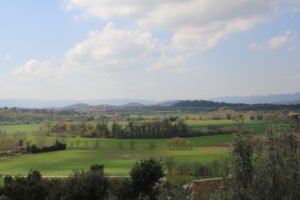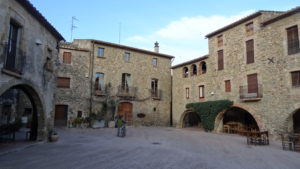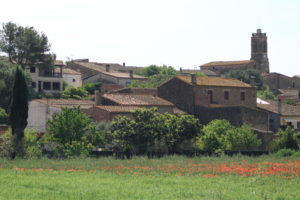Palafrugell
-

Photo: Ajuntament de Palafrugell
Palafrugell, with almost 23,000 inhabitants and a history dating back to the 10th century, is the most populous municipality in our region.
The town developed around the old medieval castle, of which virtually no trace now remains. The old town still maintains its medieval layout, crowned by the church of Sant Martí and made up of streets and alleyways that now form a large open-air shopping area.
The town’s most important period of development came in the late 18th century with the start of production of corks for bottles, something that is now reflected in the local architecture with cork factories and modernist buildings from this period. If you visit the Palafrugell Cork Museum in Plaça de Can Mario, you can learn about this industry in depth.
Opposite the Cork Museum is the modernist Can Mario water tower, which supplied the cork factory with high-pressure water. This modernist structure, which is 30 m high, offers views of all of Palafrugell and on particularly clear days all of the Baix Empordà.
Behind the tower is the Vila Casas Foundation – Can Mario Museum, a contemporary art gallery that displays works by sculptors who were born or live in Catalonia.
As well as its main part, this municipality also includes Llofriu and the coastal areas of Calella, Llafranc and Tamariu, former fishing districts that have been turned into major tourist destinations thanks to their beautiful locations and their infrastructure, with all types of accommodation, restaurants, a variety of services… The resorts that have grown around the coves have preserved their seafaring tradition and atmosphere. So, in the summer you can enjoy listening to performances of traditional habaneras. The most emblematic performance on this coast is the one in Calella de Palafrugell which is always held on the first Saturday in July.
Nearby, in Calella de Palafrugell, you can visit the Cap Roig botanical garden, set in a landscape of incredible beauty, and you can enjoy its camí de ronda path, which skirts all of the coastline.
Another place not to miss in Palafrugell is the mountain of Sant Sebastià de la Guarda, with its architectural complex (a lighthouse, a watchtower, church, lodgings for travellers and the remains of an Iberian site).
Inland in the municipality, Llofriu contains the family home of the writer Josep Pla. At the Josep Pla Foundation, located in the centre of Palafrugell, you can visit an interesting permanent exhibition on the author as well as seeing personal objects and his works.
Palafrugell has a fruit, vegetable, meat and fish market every day (except Mondays) with over 100 years of history, and every Sunday the weekly market is held, where you will find everything.
The areas great culinary wealth means there are two gastronomic campaigns for you to discover: Es Niu (October–November) and La Garoinada (January–March).
Around the celebration of the first of May, you should not miss the Flowers and Violas Festival with musical performances, decorated patios and many activities for all audiences, and between May and June the Spring Festivals are held with the Carrousel Costa Brava parade of floats marking the end of the festivities.
In October, don’t miss the Costa Brava Jazz Festival which fills Palafrugell with rhythm
-
Dades de contacte:
Oficina de turisme de Palafrugell
Av. Generalitat, 33
17200 Palafrugell
T. +34 972 30 02 28
http://www.visitpalafrugell.cat
https://www.facebook.com/turisme.palafrugell
https://twitter.com/ipeppalafrugell
https://twitter.com/ipeppalafrugell
COMPARTEIX A LES XARXES SOCIALS:









